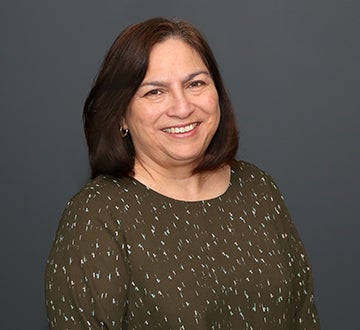Extreme Weather, Inflation Create Challenging Property Market
One year after Winter Storm Uri released its grip on Texas, we have a clear picture of the financial fallout: $23 billion in insured losses, plus another $200 billion in economic losses. The increased frequency of natural disasters such as Uri in recent years has fueled what insurance professionals call a hard property market.
In a hard market, demand increases and the number of risk pools, insurance carriers, and reinsurers—collectively called coverage providers—serving the market decreases.
Meanwhile, rising expenses associated with labor and material sparked a double-digit increase in construction costs in 2021. With no changes to your property schedule, property values will increase, and so will the amount you pay for coverage. It all adds up to a challenging property coverage market for school districts when it comes time to go out to bid or renew.
Data drives informed underwriting decisions
In a hard market, providers gather as much information as possible to get a complete picture of your risk profile. Catastrophe (CAT) modeling and property appraisals give providers critical data that helps them make informed underwriting decisions.
Developed in the 1980s, CAT modeling is a risk management tool used to quantify expected claims costs that come with weather events. Detailed information collected during property appraisals fuels CAT models and impacts your rates, coverage, terms, and conditions.
The value of property appraisals
A property appraisal is a thorough physical examination of physical structures such as buildings, their contents, and certain land improvements. The goal is to determine the cost of replacing the current building to its current structure, footprint, and condition with like kind and quality materials.
The Fund works with Kroll Reporting Solutions to provide property appraisals to our members. (Note: Kroll Reporting Solutions was formerly known as Duff & Phelps.)
Why appraisals?
- Determine whether your coverage is adequate
- Identify district locations that need to be added or removed from coverage
- Report construction, occupancy, square footage, protection, exposure (COPE), and other features on properties, which is helpful in the underwriting process and for CAT modeling
- Calculate the replacement value of your property
Impact of inflation
The industry standard for calculating replacement cost is to use models that quantify the amount of labor and materials necessary to reconstruct a building, in its entirety, at a single point in time, according to Bradley Schulz, managing director of fixed asset management insurance solutions at Kroll.
Shultz says Kroll’s models pinpoint local labor costs by ZIP code, as well as the costs of plywood, lumber, concrete, and other materials. Recent models uncover the impact of inflation on construction costs.
“We’re seeing significant cost increases during the third and fourth quarters of 2021,” said Shultz. “We anticipate those increases will be reflected in our valuation models over time.”
| Construction cost indices | 2017 | 2018 | 2019 | 2020 | 2021 |
| Engineering News-Record – Building Cost Index | 3.30% | 3.30% | 1.74% | 3.96% | 12.15% through Q3 |
| FM Global – US Industrial Buildings Average | 1.20% | 5.20% | 1.73% | 1.42% | 18.4% (through Q4) |
| RSMeans – 30-City Average | 4.00% | 5.50% | 2.05% | 1.71% | 11.88% (through Q3) |
| Marshall & Swift, US Average | 2.7% to 3.7% | 3.2% to 6.0% | 0.0% to 1.3% | 3.0% to 6.1% | 12.0% to 18.4% (through Q3) |
Data supplied by Kroll Reporting Solutions
Shultz says history suggests construction costs are on an upward trend that won’t likely reverse course, at least anytime soon.
“The annual rate of increase may slow, but when labor and material costs go up, they typically don’t come down dramatically.” Bradley Schulz, managing director of fixed asset management insurance solutions at Kroll Reporting Solutions
That means even if you don’t add facilities or equipment to your coverage, the replacement cost of your existing property has increased. When property costs more to replace, it costs more to insure, which means your coverage costs might also rise.
Navigate the property market
The Fund is here to support our members through all property market conditions. The more informed you are, the better prepared you will be to navigate the hard market.
Find a Consultant

Janina Flores
Janina Flores serves as director of the Risk Solutions Division for TASB Risk Management Services, overseeing loss prevention, emerging risks, training, and development of resources and communications.
She joined TASB in 2018, bringing more than 20 years of experience in risk management, risk pooling, and loss control from her roles at the City of San Marcos and the City of Fort Worth. Prior to working at TASB, Flores was the director of pool administration at York Risk Services Group, where she oversaw operations of the Texas Council Risk Management Fund, a governmental risk pool serving the needs of mental health centers across the state.
Flores holds a Bachelor of Business Administration from the University of North Texas and a Master of Business Administration from Texas State University.
You May Also Like…
View All Related Insights
The Basics of School Fleet Management
Your community relies on your district's vehicles, so take care of your buses, trucks, and cars with these fleet management basics.

Want to Worry Less About Data Breaches?
The accidental release of sensitive information can tarnish your organization’s reputation. Data loss prevention tools help ensure that when employees make mistakes, technology has your back.

Protect Your Fleet With a Preventative Maintenance Plan
If you want to protect your vehicles and their passengers, you need an effective preventative maintenance plan.

5 Benefits of Career and Technology Education Liability Coverage
Career and Technology Education Liability Coverage applies to students working in local or chain businesses as part of a CTE program. Here are five things to know.
